HNTB+MVVA Win ARC Wildlife Crossing Competition
By Bustler Editors|
Tuesday, Jan 25, 2011
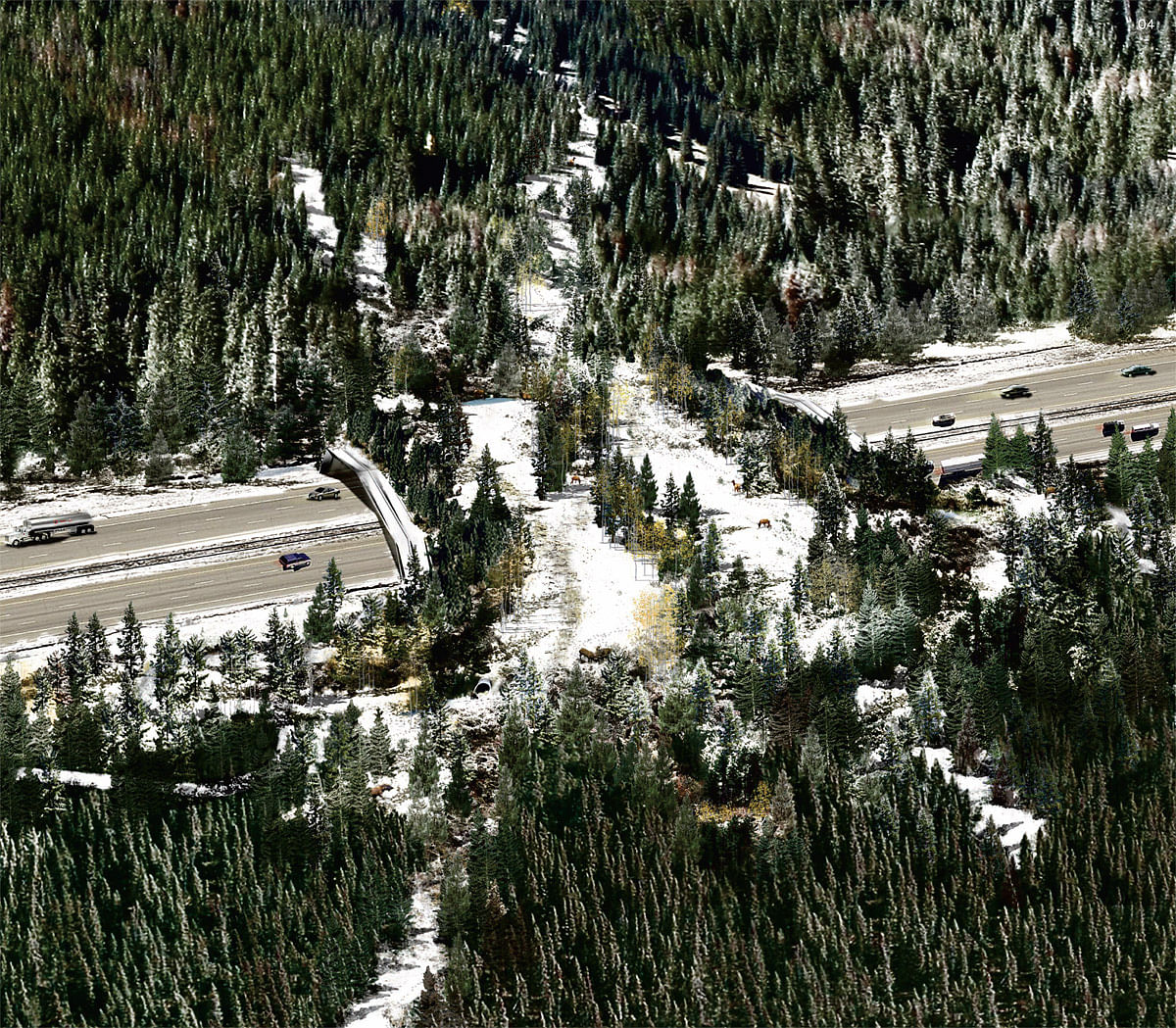
Related
Last Sunday, the ARC International Wildlife Crossing Infrastructure Design Competition announced that HNTB Engineering with Michael Van Valkenburgh Associates, Inc. (HNTB+MVVA) has won the first international wildlife crossing structure design competition. ARC was designed to solve the problem of ensuring the safe mobility of humans and wildlife by allowing them to coexist through innovative engineering and architecture. Five design firms from around the world competed to develop the next generation wildlife crossing.
HNTB+MVVA’s design is cost-effective, modular, easy to construct, provides greater material control, and uses a unique built-in drainage system.
"The winning design combines complex ecology and engineering with practical intelligence by taking ordinary technology and recasting it in a new way,” said Nina-Marie Lister, the ARC competition advisor and professor at Ryerson University in Toronto, Canada. “Using a simple, modular approach to construction, the HNTB+MVVA design deploys familiar, everyday materials with elegance and cost-effectiveness. The jury chose this design because it is not only feasible, but because it has the capacity to transform what we think of as possible – a novel design solution to a growing problem that could serve as a model for the world.”
Growing scientific research shows the importance of wildlife crossings and their effectiveness at reducing wildlife-vehicle collisions. In Banff National Park in Alberta, Canada, a continuous series of 22 underpasses and two overpasses has resulted in an 80 percent reduction in total wildlife fatalities because wildlife was allowed to roam free uninterrupted of human transportation. As a result, there have been approximately 240,000 crossings (and counting) of 11 species of large mammals, including wolf, grizzly bear, elk, lynx, mountain lion, and moose across these paths.
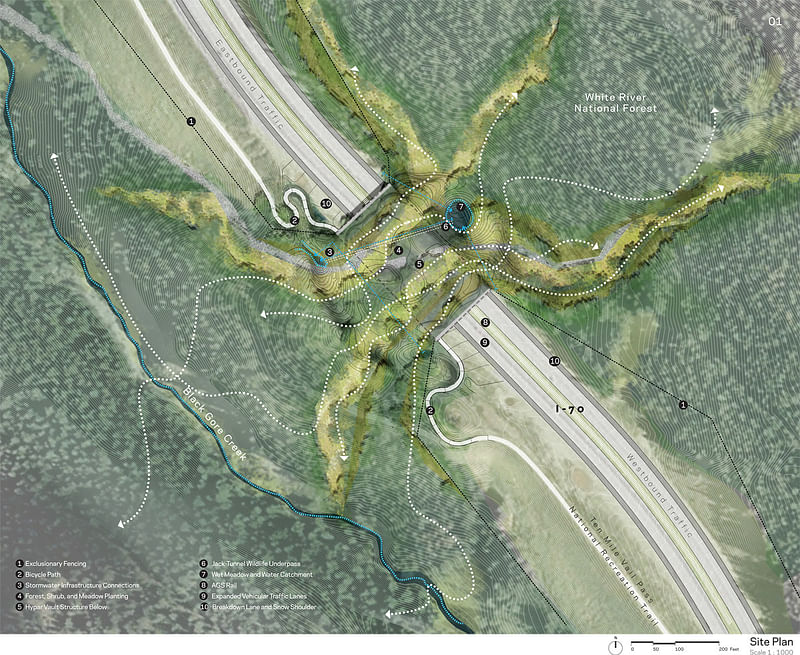
“This competition demonstrates that we have the technical expertise and the know-how to overcome design challenges and implement cutting-edge survival practices” said Charles Waldheim, chair of the ARC jury. “What we really need now is the political, economic, and social leadership to bring this design to life.”
The HNTB+MVVA design includes a single span across the highway with no center pier as opposed to the Banff overpasses, which are comprised of two single spans with a median in the center. This single span is a unique feature that will provide a much safer experience for drivers by creating a more open experience. There are also significant benefits to wildlife in the winning design as it is approximately four times wider than the structures in Banff. This provides an ideal setting to accommodate wildlife movement and a diversity of habitats on top of the bridge. One of the more promising design features from a constructability and engineering standpoint is that the winning design can be built without closing the highway in both directions.

“The international competition both establishes and inspires a new category of public infrastructure that is both responsive and responsible to environmental concerns,” said Jared Polis (D-CO), Colorado Congressman. “The ARC competition addresses a global problem with a Colorado-based solution that will demonstrate the importance of international cooperation.”
The jury was impressed by the caliber of all five of the finalist designs. The finalists were chosen to compete from 36 team submissions across nine countries, representing more than 100 firms worldwide. The jury was looking not only for sustainable, beautiful, compelling designs that met the needs of people and respected wildlife, but also those which utilized materials that make infrastructure more affordable in terms of capital cost, maintenance, and long term sustainability and, ultimately, make our roads safer.

The jury was impressed by the caliber of all five of the finalist designs. The finalists were chosen to compete from 36 team submissions across nine countries, representing more than 100 firms worldwide. The jury was looking not only for sustainable, beautiful, compelling designs that met the needs of people and respected wildlife, but also those which utilized materials that make infrastructure more affordable in terms of capital cost, maintenance, and long term sustainability and, ultimately, make our roads safer.
The site of the design competition was West Vail Pass on I-70 in Colorado, about 90 miles west of Denver. West Vail Pass was chosen as the site of the wildlife crossing from among 25 candidates from 16 states across North America. Colorado’s I-70 corridor is considered to be a significant barrier to wildlife movement because it is the only east-west interstate providing for the movement of people, goods, and services across the state and bisects a critical habitat linkage in the Southern Rocky Mountain region.
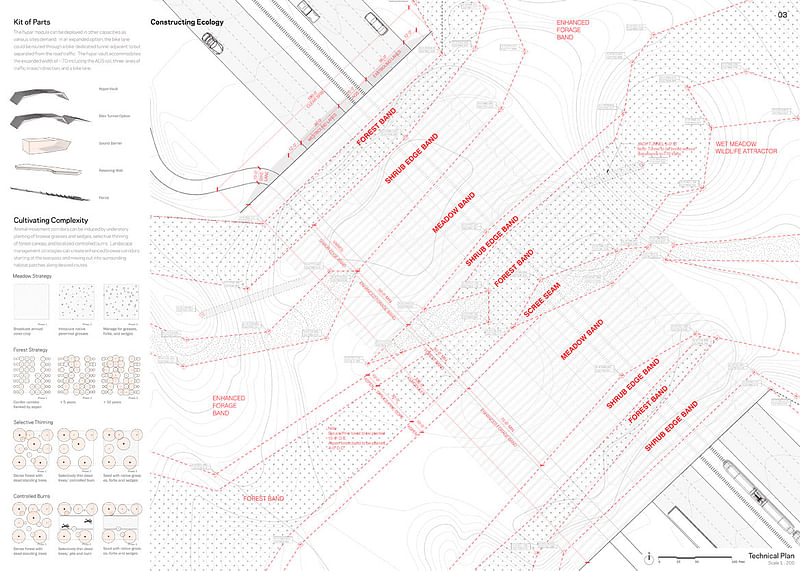
Each finalist received an honorarium of $15,000 and the winning design team received $40,000. Robert Rock, Senior Associate for Michael Van Valkenburgh Associates, Inc. and Ted Zoli, Technical Director of Bridges for HNTB and MacArthur Fellow (nicknamed the “Genius Award”) presented the winning design.
See more plans and diagrams in the image gallery below. Images courtesy of ARC competition.
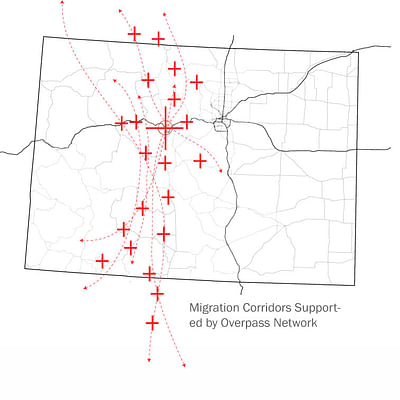



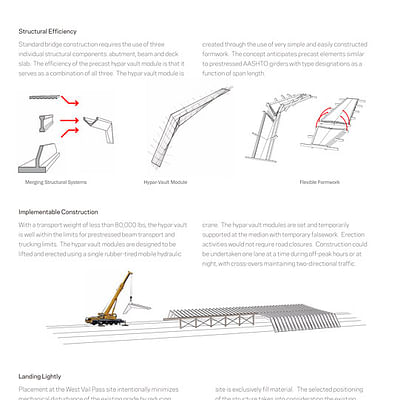

Share
0 Comments
Comment as :